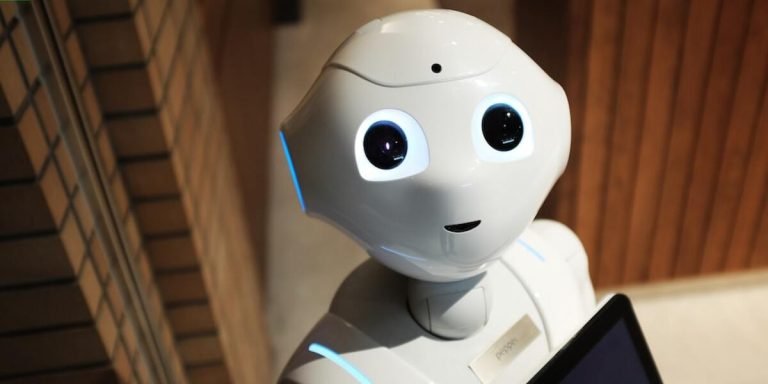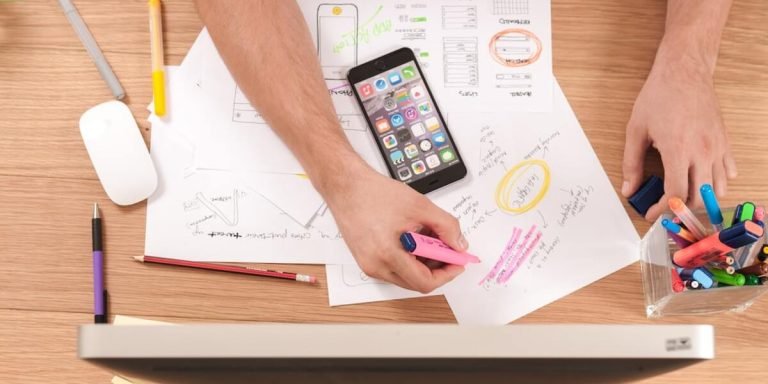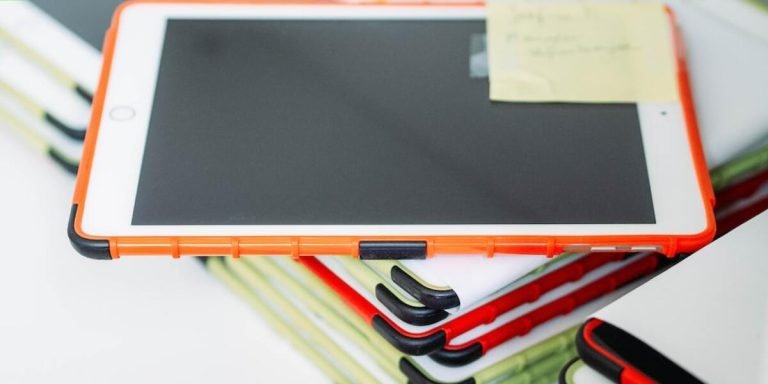What is Mobile Learning and its Role in Childhood Education
Our digital age continuously redefines many aspects of our daily lives, and education makes no exception. One emerging trend is mobile learning, a topic that leads some to ask: “What is mobile learning?” Essentially, this refers to using portable electronic devices like smartphones or tablets for educational purposes- whether in the classroom or at home.
Diving deeper into what is mobile learning offers novel perspectives on childhood education. By integrating technology within the academic sphere, children are exposed not only to innovative ways of absorbing knowledge but also acquiring critical thinking skills through interactive applications and games designed specifically for their level. The shift from traditional methods entails challenges but opens doors towards more imaginative and versatile approaches as well.
Did you know?
According to eLearning Industry, by 2025 the mobile learning market is predicted to reach $78.5 billion globally, presenting vast potential for revolutionizing childhood education.
The Evolution of Mobile Learning in Educational Settings
The digital revolution has fundamentally altered how we live, work and learn. This transformation is especially apparent in the field of education where technology integration has become an integral part of modern teaching methods. One such technological boon that’s reshaping educational systems worldwide is mobile learning.
Mobile learning or m-learning involves the use of handheld devices like smartphones, tablets and laptops for educational purposes anywhere and anytime. It marked a significant shift from traditional instructor-led classroom approach to flexible self-paced e-learning when it was introduced back in late 2000s.
Nowadays, with almost universal access to internet connectivity, mobile learning tools are no longer luxury but rather necessities for both learners and educators alike. They provide convenient platforms for sharing resources, conducting online assessments as well as facilitating real-time communication between students & teachers – thus breaking physical boundaries and time constraints associated with conventional classrooms.
Understanding the Transition from Traditional to Mobile Education
Mobile learning, often abbreviated to m-learning, signifies educational methods that utilize mobile or handheld devices. It’s a significant part of the technology integration in education we’re witnessing today.
To unpack “what is mobile learning”, it refers specifically to anytime-anywhere learning facilitated by portable gadgets like tablets, e-readers and smartphones. M-learning has gone mainstream given our increasing reliance on smart devices for information access at an arm’s length convenience.
The transition from traditional physical classroom settings to digital classrooms is not something that happened overnight – rather it was gradual yet profound. Initial hesitation among educators about integrating tech tools into their curricula slowly gave way as they started recognizing how these can make teaching more interactive and engaging while improving students’ grasp over complex concepts.
Smartphones are no longer just communication devices – they have become core facilitators of personalized remote learning experiences with custom content available round-the-clock at learners’ fingertips enhancing accessibility beyond geographical barriers.
In 2023 there’s broad consensus around indisputable benefits of m-learning. For instance:
1) Greater Flexibility: Mobile education allows both teachers and students substantial flexibility regarding when, where & pace at which studying takes place.
Key Milestones in the Adoption of Mobile Learning Technologies
Mobile learning stands as one of the most significant advancements in today’s education sector. But what is mobile learning? At its core, it represents the integration of technology into teaching and educational settings.
It offers students direct access to knowledge sources via their smartphones or tablets from any location at any time.
Exploring key milestones that have charted this phenomenal journey reflects on how far we’ve come integrating technology into everyday student life.
Next came the introduction of iPad by Apple once again in 2010 – an innovation that further pushed boundaries of mobility effecting change drastically within traditional classrooms worldwide offering educators another tool besides computers for IT-based instructions.
Then we arrive at our current year -2023 where Artificial Intelligence (AI) has started functioning seamlessly together with Mobile Learning technologies taking educational landscape higher level combining adaptability personalization unique individuals thereby increasing effectiveness overall process.
These occurrences form part key transformational phases setting cornerstones modern world “learning go”.
Advantages and Challenges of Integrating Mobile Learning into Curriculum
The integration of mobile learning in today’s educational curriculum provides a plethora of benefits. It offers an increased level of accessibility, allowing students unrestricted access to educational material anytime and anywhere through their handheld devices. This promotes a more flexible approach to education that no longer confines the student’s academic activities within the four walls of the classroom.
Moreover, mobile learning brings interactivity into play by incorporating multimedia elements such as videos, animations and interactive quizzes making content engaging for young learners. Mobile apps provide intuitive interfaces that children can navigate with ease while fostering digital literacy skills essential in this technology-driven age.
However, it is crucial to acknowledge possible challenges alongside these advantages. Not all students have equal access to these technologies; hence leading up potential disparities in delivering quality education among varying socio-economic demographics – often referred to as ‘digital divide’. Additionally, excessive screen time poses health risks such as vision impairment or sedentary behavior which could affect physical well-being over prolonged periods.
Educators must therefore be proactive in leveraging technological advances whilst developing strategic measures against its correlated setbacks ensuring advanced yet balanced teaching methodologies are employed daily.
Maximizing Engagement and Accessibility with Mobile Devices
Mobile learning, often referred to as “mLearning,” is an increasingly popular education method. With the ubiquity of smartphones and tablets in today’s society, it brings a whole new dimension to classroom instruction by integrating technology into education.
The main aim of mobile learning is accessibility. This educational concept allows students access to their coursework anytime and anywhere convenient for them – be it at home or on-the-go. It also facilitates social interaction through digital platforms helping children not only learn but communicate effectively with peers across distances.
Furthermore, mobile devices are capable of engaging learners visually through videos and infographics that provide valuable insight beyond textbooks’ confines – thus making the process more interesting.. Gamified apps can foster quick skill-building while encouraging user engagement simultaneously enhancing motivation levels among young learners too!
Navigating Potential Obstacles in Implementing Mobile Education Programs
The process of incorporating mobile learning into a student’s daily curriculum is not without its challenges, despite the many advantages it provides. Grasping what mobile learning truly entails and understanding how to navigate potential roadblocks can lead us towards an improved methodology in imparting education.
Educators must overcome certain hurdles to implement this innovative, tech-oriented teaching method.
1. **Improper Device Management:** With students using personal-usage gadgets for academic activities, controlling app usage during lessons may be problematic due ongoing distractions.
2. **Internet Accessibility:** Not all learners possess reliable internet connections rendering continuity issues in online sessions.
3. **Technical Difficulties**: Some users might lack technical savviness leading trouble operating digital applications necessitating additional skills-training modules.
4. **Security Concerns**: Personal information risk through malicious threats needs vigilance over school’s network security systems establishing robust firewalls against cyberattacks protecting sensitive data.
5.Varying device capabilities: Differences hardware specifications could influence experience quality impacting interaction between students causing unintentional discrepancies within peer groups.
Future Trends: The Role of Innovative Technologies in Enhancing Mobile Learning
The future of education is mobile, a shift rapidly facilitated by innovative technologies. Mobile learning or mLearning, as it’s commonly referred to in the educational domain, encapsulates the concept where learners utilize electronic devices such as smartphones and tablets for information access and learning purposes from any location at their convenience. As we hinge on 2023 , this approach takes startling leaps with technological integration steering its path.
Technology plays an instrumental role in enhancing mobile learning experiences. The introduction of augmented reality (AR), virtual reality (VR), artificial intelligence (AI) and machine learning has not only transformed teaching methods but also enriched students’ understanding through interactivity beyond traditional classrooms settings. These digital formats have allowed children to take theoretical concepts learned via physical textbooks and translate them into practical applications using simulations that augment cognition while fostering engagement.
Innovative technologies like AR/VR heighten experiential learning exponentially allowing students to explore environments otherwise inaccessible due to geographical constraints – imagine taking a virtual field trip right within your classroom! AI-powered platforms identify individual learner needs, adapt content accordingly thus ensuring personalized attention which contributes significantly towards effective comprehension while minimizing knowledge gaps systematically.
Exploring Cutting-Edge Tools for Personalized Educational Experiences
Modern technology has revolutionized the way we live, work and learn. In education specifically, advancements have given birth to mobile learning – but what is mobile learning? Simply put, mobile learning leverages portable devices like laptops, tablets or smartphones for educational purposes.
Thanks to technological innovations presented in 2023 alone; teachers are no longer confined within a certain curriculum template.
In fact, one of the significant developments involves personalizing students’ experiences with cutting-edge tools enabling tailored lessons based on their unique needs and capabilities…no two individuals being exactly alike after all! This approach ensures everyone learns at their own pace which can hugely improve comprehension rates.
Then there’s Augmented Reality (AR), another momentous leap forward when talking about innovative technologies improving personalized educational experiences through mobile learning platforms. Imagine transforming any room into an interactive playground where abstract concepts come alive right before your eyes…sounds exciting doesn’t it? With AR software integrated into apps dedicated for study, kids can interact directly with animations representing complex scientific phenomena or historical events making these subjects much more relatable!
Predicting Next-Gen Developments in EdTech for Improved Student Outcomes
Firstly, Artificial Intelligence (AI) stands on the frontlines of future technological advancements set to shape EdTech trends in 2023 . A.I holds transformative potential, offering personalized learning experiences tailored according to each child’s unique pace and grasp over subjects.
Secondly, Augmented Reality (AR) and Virtual Reality (VR) are also expected to redefine traditional teaching methods. These immersive technologies provide students with practical examples aiding their comprehension of complex theoretical concepts.
The third trend hinting at next-gen developments includes Gamification in educational applications. By incorporating game-like elements such as rewards systems or competitive features into study materials, educators are likely finding increased engagement from students leading towards better academic performance.
Another significant progression lies within Cloud-based Learning Platforms that enable collaborative classrooms despite geographical boundaries; this not only integrates technology in education but brings forth inclusivity too!
Moreover, Blockchain Technology isn’t just limited to cryptocurrencies—it’s slowly infiltrating its way into the schooling system by providing safe storage solutions for academic records ensuring transparency between institutions when transferring credits or changing schools.
Lastly, big data analytics plays an integral role in evaluating student behavior patterns which may help predict early dropout risks thereby enabling timely remedial actions contributing effectively towards improving learner outcomes.
Conclusion
In a world where technology is ubiquitous, understanding “what is mobile learning” and its important role in childhood education has become absolutely crucial. As parents and educators, embracing this interactive mode of learning could indeed be the key to unlocking your child’s potential and keeping them engaged in their educational journey.
We hope we’ve provided some clarity on what Mobile Learning entails for your children’s schoolwork. There’s an ocean of digital resources out there that can transform how children learn today! Don’t stop here though – continue exploring our website filled with guidance related to educating young minds.
We’re committed to supporting parents and educators like you every step along the way as you navigate these exciting yet challenging waters.







